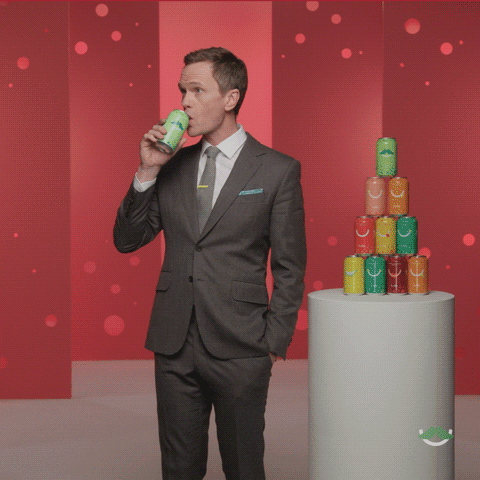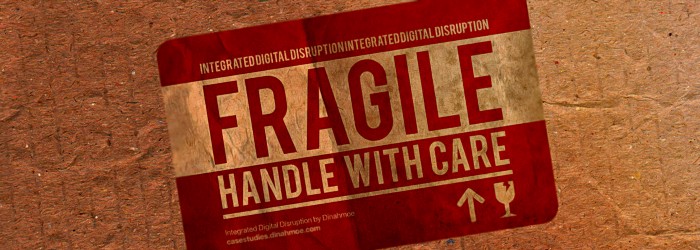The date is March 28th 2018 and social media is in the crosshairs. The last six months surely hasn’t been easy for the social giants and it will be very insteresting to see how it all plays out. This article is not about that. It is about the state of content in marketing.
This topic has been in my head for a couple of months and it finally decided to come out. Yes, it is in parts generalized and simplified. Some of you will for sure not agree. Others will say that I am stating the obvious, which I think I am, but then it is clearly not obvious for everyone. So from where I stand it seems like we should talk about it. So let’s dive in!
The sad state of “content”
“We need content”
“What content?”
“Doesn’t matter, just give me some content!!”
It has been all about “content” the last couple of years. Content is supposed to be King, but if I look at the content in my social feeds there is nothing Royal about it, it seems more like a screaming salesman at the local market, clickbait headlines, something moving just to grab my attention. Even the way the word “content” is used in the industry makes it sound like it doesn’t have any value, it is just whatever you put in the ad unit.

But the “content” is the real value, right? It is not the cover of a book that is the value but the words inside, it is not the betamax video tape but the scenes in the film and so on. You would not call the paintings in a museum “content”. Or the motion picture you just saw at the cinema. Do you say “How ‘bout watching some content on Netflix tonight, honey?”… ok maybe someone would actually say that.
I keep coming back to this definition of content marketing, it sounds like a pretty good value proposition for the customer:
Content marketing is a strategic marketing approach focused on creating and distributing valuable, relevant, and consistent content to attract and retain a clearly defined audience — and, ultimately, to drive profitable customer action.
So content according to this definition is something valuable. Where did we go wrong?
A scrolling state of mind
Social channels have brought a change in how people consume media. We scroll, we don’t care and we forget. The “impression” we get of an ad is superficial at best, if we even see it. Isn’t it interesting how the meaning of words get watered down to almost nothing? “Impression” means that the user might have seen the ad, “engagement” means that they clicked or liked which is as low as you can set the bar. But that is another story.
It is simply not possible to deliver anything of real value in a scrolling feed, so you have to use all tricks to grab the fickle attention of the user. Creativity is a necessity when the toolbox is limited but are we really putting our energy in the right place?
Social is a black hole for content
In my nightmares I work at an agency, everyone is running around, totally hysterical, screaming:
“Content! We need more content!”
and then I wake up and realize that it is probably how it is. Or so I have been told.
Social gobbles content, it is insatiable. Put something in the social feed and see it disappear, just some hours from when you saw that amazing video it is gone, even if you do a search it is almost impossible to find, production value wasted and soon it is forgotten.
And that is how Facebook and Twitter wants it to be, all content is temporary, it needs to be refilled, again and again. The best content in the world just lives while you scroll past it in the feed. And then, gone! So there is a constant need for more.
The correlation between “more” and “great”
It is not enough that we create “more content”, it also has to be “great content”, “better than all the other content”, because how do we expect someone to remember our content after they have been exposed to that amazing content that came right after it in the feed?
I am sorry but I have to break this to you: the correlation between more and great is if anything inverse. More content with the same resources means lower quality. It is the first law of thermodynamics. Or content production, same same.
So the producers tell the creatives that they cannot spend too much time on the details and instead focus on creating more. Quantity instead of quality. Or so I have been told.

There is only that much attention to grab
Social is great for targeting users that are more likely to buy the message. But the effect of this targeting diminishes when you think about that there is only that much attention to grab. All content competes over a limited resource, our attention. The number of ads in the feed is set to balance the greed of the channel (oops did I really say that?) and the annoyance of the user.
The value in the transaction is the user’s attention which means that all ads that the channel has algorithmically decided that you “want” compete with all other ads. Shoes compete with cars compete with cereals. Brands that are more sexy will have a clear advantage, as will production value (which we prioritized down in the earlier part in favor of quantity). Clearly we need to spice up the cereals!!
Content has become a commodity
Amazon has revolutionized the retail business. It doesn’t matter what product you are looking for, Amazon has it. Everything is presented in the same interface, everything looks the same. The service is what matters, the product is interchangeable, it has become a commodity.
The social feed works the same way. All communication has to be squeezed through the template which makes all content look the same. Only ideas that are adapted to the format are allowed. How are you going to stand out if everything looks the same? The service is what matters, the content is interchangeable, it has become a commodity.
And with Facebook’s plans to launch Facebook Lite in the so called developed world we are essentially moving back 20 years in time. I am sure that Facebook has a perfectly optimized Lite ad template that will make your content look totally amazing!
Not all marketing can be done with a clickbait headline or a 3 sec video
Because that is what content has been reduced to, right? Something that should grab our intention while we are SCROLLING through our social feed. If you accidentally stop your scrolling for 3 secs on a video ad in Facebook that is registered as a view. No sound required, just stopping the scrolling motion, feeling impressed now?
Ok but it cannot get any worse right? Wrong! According to this Adweek article the “future of marketing” is branded GIFs produced in the thousands that lets “users express themselves”…..seriously????!!!!

Social is not owned media, never was, never will be
In the beginning social allowed brands to connect with their fans and market towards them with their permission. It gave them the illusion that it was ”their” channel but that was pretty short lived. Now you have to pay to reach the people that you have been able to attract. And since everything is temporary you don’t only have to constantly create new content, you also have to pay again and again and again. Loser!
This has dire consequences both for publishers and content producers whose followers “are held hostage, and the ransom keep changing”. This interview with Matt Klinman at Funny or Die is a must read. And if that isn’t depressing enough, here is John Herrman putting what is happening now put in a historical context.

It is time to move on!
I could go on for a while more but I guess you got the message. Facebook, Twitter, YouTube, Reddit and other platforms for content has in many ways replaced the web, and we have become prisoners of the algorithms. Social media is trying to balance the shareholders’ needs with the users’ and I think that is doomed to fail. The user behavior has also changed, we will not post pics of our lunch anymore, even with a refocus on “friends and family”. And if the social channels must take responsibility for the content published, then they are no longer platforms but publishers, which will have some very interesting legal and market implications 🙂.
We might very well have seen the peak of the social media revolution. But don’t despair, the Internet is vast and we have just begun figuring out how to use it. It is time to look for new and rediscover old ways to find and keep a relation with potential customers. High quality content that delivers real value to the users will play a crucial role. I hope to be back soon with my thoughts on that!
